Repair of a modern home is hard to imagine without using a stretch ceiling. The types of materials from which it can be made are very diverse. At present, there are so many stretch sheets that a person who is first confronted with a choice can easily get confused.
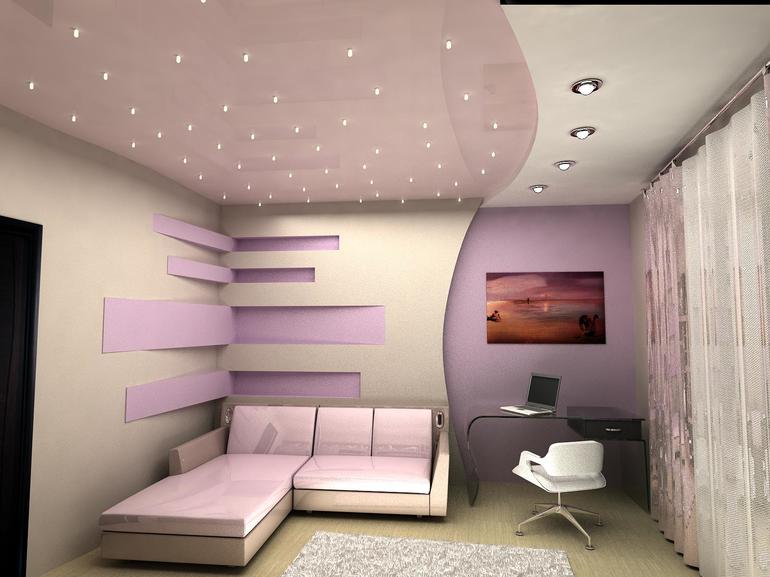
PVC canvas
The most common material is PVC film. Installation takes place by heating the room in which the repair is done, and then cooling it. PVC paintings have many advantages:
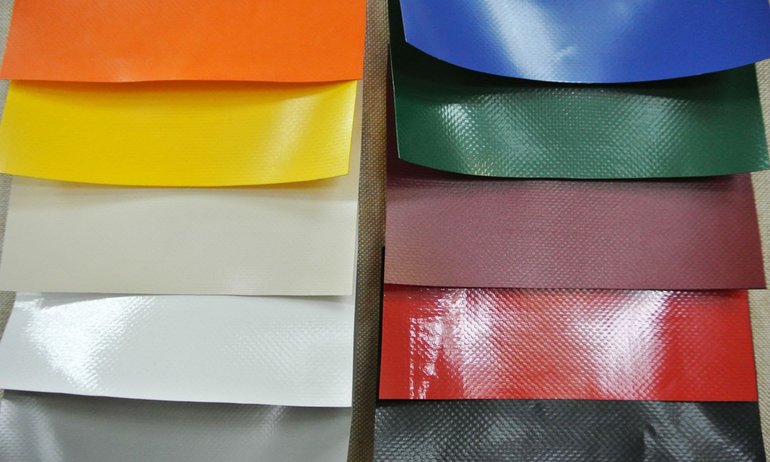
- have many options for design and textured solutions;
- Do not deteriorate from moisture and flooding;
- easy to install;
- quite cheap;
- not affected by factors such as dust, mold, odors;
- well hide irregularities and imperfections that arose during construction;
- easily removed and reinstalled at any time.
But this type of ceiling has its drawbacks. Even with the highest quality installation, the film will have a sag of at least 3 cm. This is due to the fact that with a strong tension the film can break. Moreover, PVC film does not tolerate temperature extremes.
Fabric ceilings
Fabric is one of the most durable types of materials.used for this type of repair work. A fabric that is treated with a special solution is used. It makes the web more durable, thereby increasing the service life. Fabric ceiling is stronger than film. Beautiful, practical and not requiring much effort in installation, he firmly secured one of the leading positions in the market.
Installation is carried out without temperature differences. The canvas is inserted into a special frame - a baguette. Advantages of the material:
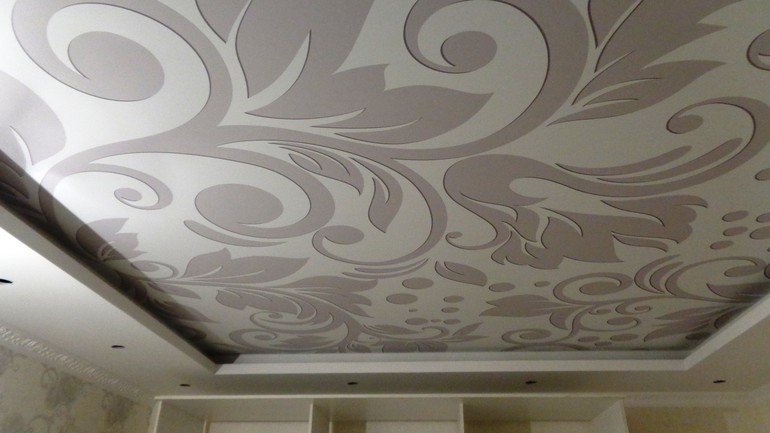
- The surface breathes because the structure of the fabric is porous.
- The fabric base tolerates temperature changes remarkably, therefore it can be used in those rooms that are not heated all year round.
- Convenient and easy to install. No need to use the thermal method. It is only necessary to assemble a special frame, moisten the fabric and pull it.
- The solution with which the fabric is impregnated makes it very strong. Such impregnation does not harm human health.
Cons of stretch ceilings from fabric:
- Since there are pores in the tissue, dust and dirt constantly get into them. Therefore, caring for them is more complicated.
- The cost of fabric material with impregnation is several times higher than that of PVC film.
To make the right choice, it is important to know what types of stretch ceilings are and how they differ from each other.
Texture, color, shape
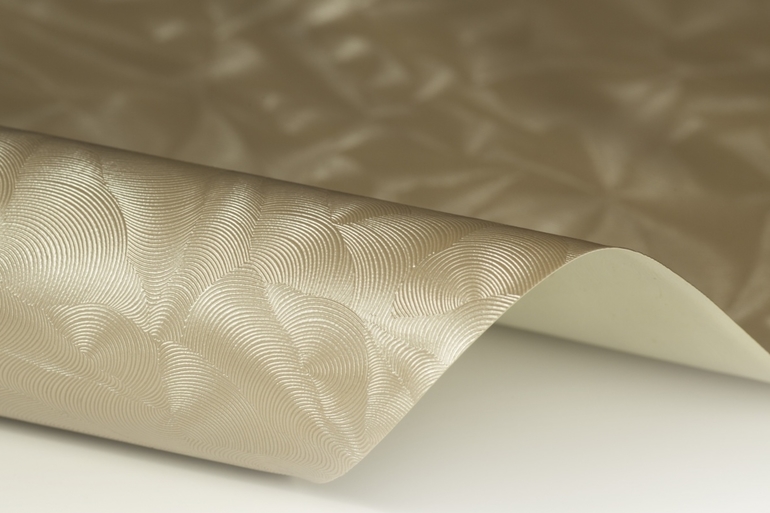
Stretch webs differ in textured and color data. There are matte, glossy and satin textures on the market. They are among the most common. There are also textured, combined, translucent, perforated options. The matte fabric can be either fabric or film. With this texture, the impression of the surface that was plastered is created. This option is the most affordable.
The glossy ceiling visually increases the size of the room and the height, since it looks like a mirror. It is also called mirror.
This canvas has a wide range of colors. A satin surface will not reflect every highlight of light. It looks smooth, with a light and soft shine.
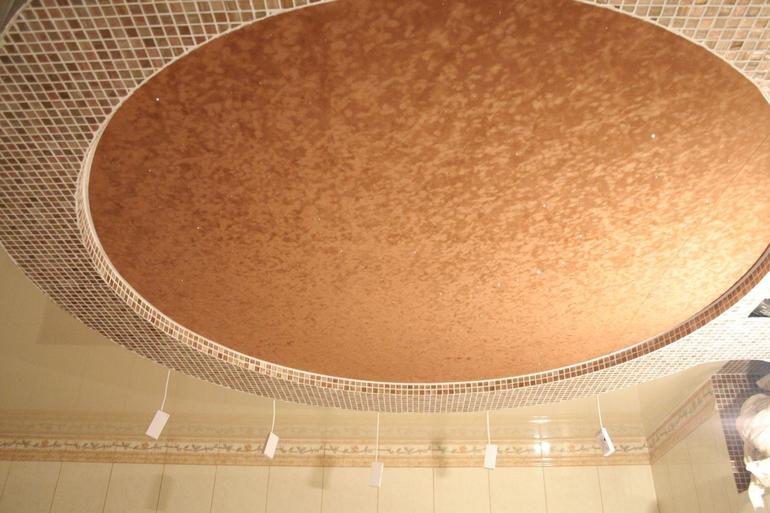
Stretch webs have another classification. They are divided into single-level, multi-level, soaring. It all depends on how many levels the structure consists of. There are also the following varieties of suspended ceilings: arched, flat, in the form of waves, in the shape of a cone. On any type of stretch ceiling, you can apply a picture or photo printing.It looks very beautiful and modern. And the original top lighting will be an adornment of any room.
A stretch ceiling is an important part in the decor of a living room. Canvases vary in color, material from which it is made, according to invoice data and so on. A variety of species allows you to get a canvas that will become the main advantage of an apartment or house.

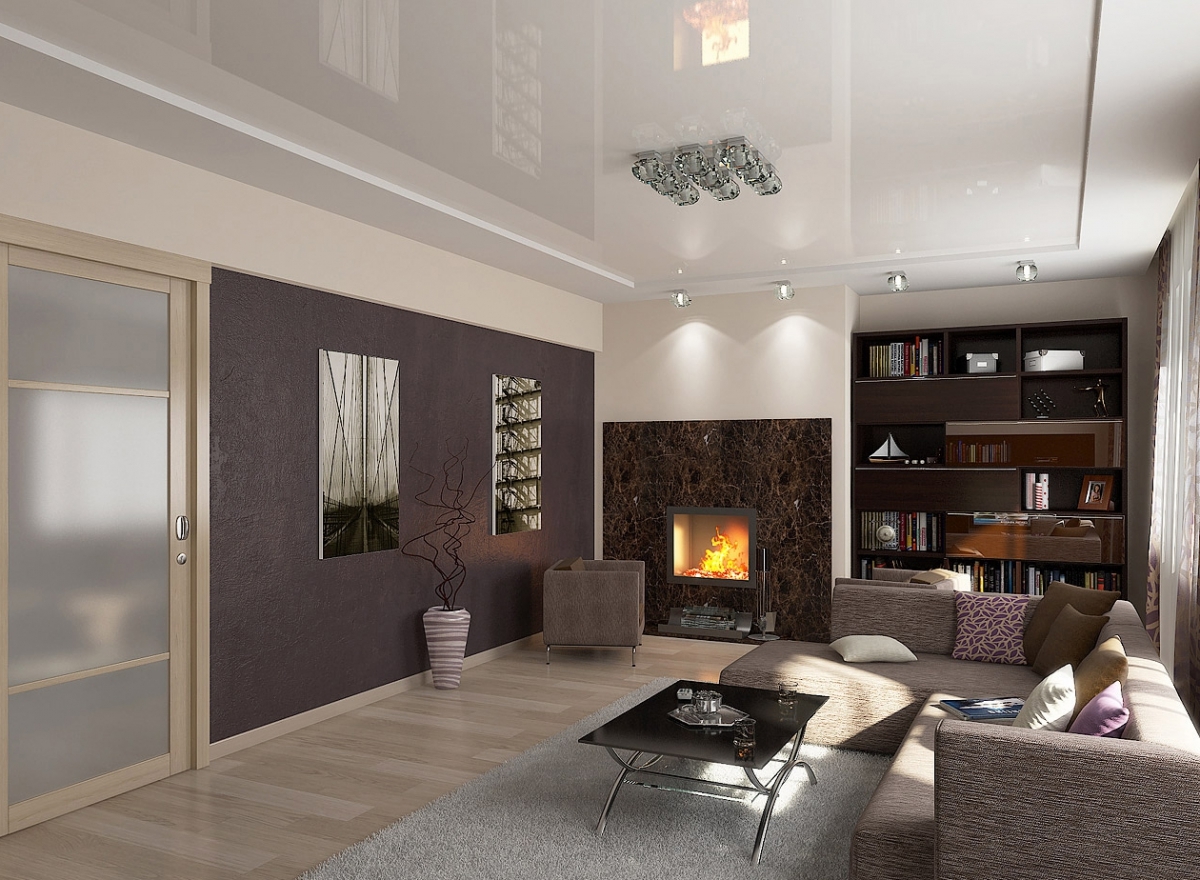



Alas, no comments yet. Be the first!